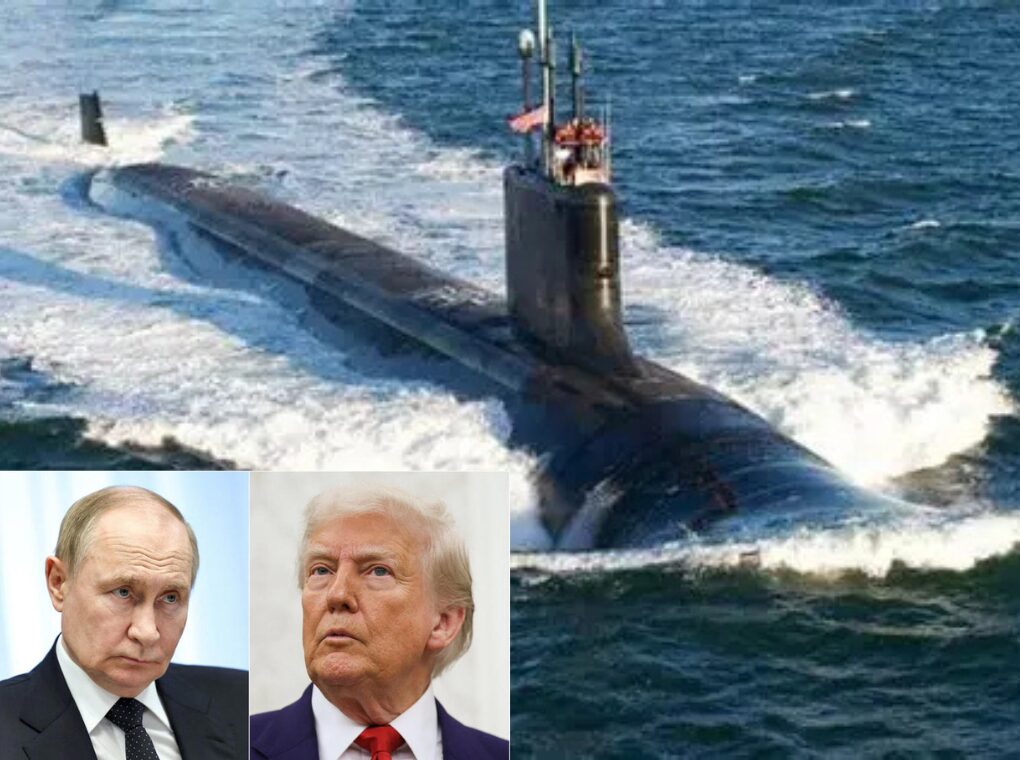Amid mounting tensions in Europe’s northern waters, NATO has launched an intensified operation to detect and track Russian submarines believed to be shadowing a U.S. aircraft carrier group. The heightened activity reflects the alliance’s concern over Russia’s increasingly assertive naval maneuvers and the growing risk of confrontation in the Arctic and North Atlantic.
USS Gerald R. Ford at the Center of Tensions
The focus of NATO’s efforts is the USS Gerald R. Ford, the U.S. Navy’s most advanced aircraft carrier and the flagship of a strike group currently conducting training exercises off Norway’s west coast. The carrier, accompanied by the Norwegian frigate Thor Heyerdal, the supply ship Maud, and F-35 fighter jets, represents a powerful display of multinational defense cooperation.
Since August 24, NATO has deployed at least a dozen maritime patrol aircraft, including U.S., British, and Norwegian P-8 Poseidon surveillance planes. These aircraft have been flying continuous sorties from bases in Scotland, Iceland, and Norway, sweeping the North Atlantic and Norwegian Sea in search of Russian undersea activity.
Satellite imagery and intelligence reports indicate that Russia’s three Yasen-class nuclear-powered attack submarines—the Severodvinsk (K-573), Kazan (K-561), and Arkhangelsk (K-564)—have all left their home port in the Kola Peninsula. Their absence suggests an unusual and coordinated deployment at sea, raising concerns about potential tracking of NATO naval assets.
Why Yasen-Class Submarines Matter?
The Yasen-class submarines are among the most advanced vessels in Russia’s fleet. Known for their stealth and quiet operation, they are capable of carrying Kalibr land-attack cruise missiles and Zircon hypersonic missiles, giving them the ability to strike targets at long range with little warning.
These submarines are designed to operate in contested environments such as the Arctic, where icy waters and complex acoustic conditions already make detection difficult. Their deployment in the vicinity of a U.S. carrier strike group is viewed by NATO officials as a direct challenge to alliance naval power and freedom of navigation.
Military analysts note that even a small number of advanced submarines can tie down significant NATO resources. “One Yasen-class submarine can keep multiple NATO ships and aircraft occupied,” said a European defense expert, “and that is exactly what Moscow wants—stretching alliance resources thin.”
NATO’s Strategic Concerns
Although NATO officials have refrained from issuing public statements about the operation, the scale and persistence of surveillance flights suggest a high level of concern. The North Atlantic and Arctic waters are vital to alliance defense planning, serving as key transit routes for reinforcements from North America to Europe in the event of a crisis.
The USS Gerald R. Ford strike group’s location near the Lofoten archipelago adds further significance. The Norwegian coastline is considered a gateway to the Arctic and an area where Russian and NATO interests overlap. Norway, as a NATO member, hosts alliance exercises and provides crucial air and naval bases for monitoring Russian activity in the High North.
For Moscow, submarine deployments in these waters are a means of signaling capability and deterrence. Russia’s Northern Fleet, headquartered near Murmansk, is central to its nuclear deterrent strategy. By placing advanced submarines in proximity to NATO carrier groups, Russia demonstrates both its reach and its ability to threaten strategic assets.
A Renewed Era of Submarine Rivalry
The intensified search recalls Cold War-era cat-and-mouse games between NATO and Soviet submarines. Today, however, the stakes are arguably higher. The war in Ukraine has heightened tensions between Russia and the West, and Moscow has increasingly turned to its naval forces to showcase strength beyond the battlefield.
NATO, for its part, is adapting. The increased deployment of P-8 Poseidon patrol aircraft, investments in anti-submarine warfare capabilities, and closer coordination among alliance members reflect a recognition that the undersea domain is once again a critical front in European security.
What next ?
The ongoing hunt for Russian submarines highlights both the resilience and the vulnerability of NATO’s maritime posture. While the alliance has the tools to detect and deter undersea threats, the presence of Yasen-class submarines underscores how easily a few advanced assets can complicate defense planning.
As one Western diplomat observed, “This is not just about submarines. It’s about signaling, deterrence, and the contest for dominance in Europe’s northern waters.”
For now, NATO’s hunt continues, its aircraft scanning the skies and seas for silent adversaries beneath the waves. But the broader challenge remains: managing a renewed era of submarine rivalry that threatens to unsettle the fragile balance of power in the Euro-Atlantic region.
